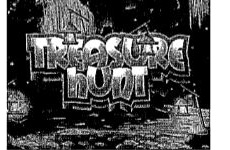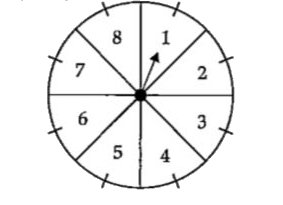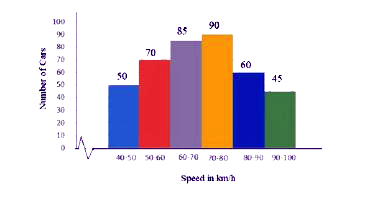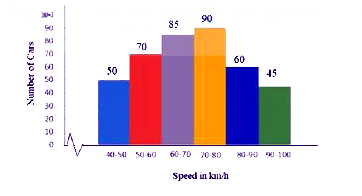Treasure Hunt Games : While playing a treasure hunt game, some clues (numbers) are hidden in various spots collectively forms an AP. If the number of the nth spot is 20+4n, then answer the following questions to help the player in spotting the clues.

Which number is on the (n−2)th spot?
The correct Answer is:12+4n
Topper's Solved these Questions
Similar Questions
Following table shows the points of each player scored in four games

Now answer the following questions
To find the mean number of points per game for C, would you divide the total points by 3 or by 4 ? why ?
View SolutionRead the following text and answer the following question on the basis of the same.
A game of chances consisting of spinning an arrow which comes to rest pointing at one of the numbers 1, 2, 3, 4, 5, 6, 7, 8 (see the figure) and these are equally likely outcomes.

If pointer lies mid of the number 2 and 3, then the probability is
View Solution
Knowledge Check
The given histogram shows the frequency distribution of the speed of cars passing through a particular spot on a highway. Read the graph and answer the following question.

What is the ratio of the number of cars with speed less than 60 km h to the number of cars with speed more than 70 km/h?A13:8B8:5C8:13D5:8Simplify:- 25% of 48 + 50% of 120 = ?% of 1200
Aa. 4Bb. 5Cc. 6Dd. 8Study the Topographical Sheet Number 45D/10 and answer the following questions :
Eastings : 69 to 75, Northings : 32 to 42
Figure out the four figure grid reference of Spot height (.437).A7040B7041C7140D7141
Study the information below and answer questions based on it.
Ghosh Babu goes to a casino in Kay-Kay islands where he comes across an interesting game of cards. The visitor playing the game is called the player & the clubman is called the dealer. The rules of the game are as follows : First the player picks the card. This card is called the base card & the number on the face of the card is called the base value of the card. Ace, King, Queen & Jack all have base value of 10. The dealer pays the player same number of rupees as the base value of the card. Now the dealer picks a card & this is called the top card. If top card is of the same suite then the player pays the dealer double the amount of base value. If it is of the same colour but not the same suite then the player pays the dealer the amount of a base value. If it is of different colour then the dealer pays the player the amount of base value. Ghosh Babu plays the game 4 times. First time, he draws 8 of club & the dealer draws jack of club. Second time he draws 10 of hearts & the dealer draws 2 of spade. Third time he draws 6 of diamond & the dealer draws 1 of heart. Finally, Ghosh Babu draws 8 of spade and the dealer draws ace of the spade.
If Ghosh Babu should leave the game when his profit is maximum then what is that profit?
View SolutionThe given histogram shows the frequency distribution of the speed of cars passing through a particular spot on a lighway. Read the graph and answer the following question.

The number of cars with speed (km/h) in the interval (60 - 70) km/h is what percentage less than the number of cars with speed (km/h) in the interval (70-80) km/h? (correct to one decimal place)
View SolutionStudy the information below and answer questions based on it.
Ghosh Babu goes to a casino in Kay-Kay islands where he comes across an interesting game of cards. The visitor playing the game is called the player & the clubman is called the dealer. The rules of the game are as follows : First the player picks the card. This card is called the base card & the number on the face of the card is called the base value of the card. Ace, King, Queen & Jack all have base value of 10. The dealer pays the player same number of rupees as the base value of the card. Now the dealer picks a card & this is called the top card. If top card is of the same suite then the player pays the dealer double the amount of base value. If it is of the same colour but not the same suite then the player pays the dealer the amount of a base value. If it is of different colour then the dealer pays the player the amount of base value. Ghosh Babu plays the game 4 times. First time, he draws 8 of club & the dealer draws jack of club. Second time he draws 10 of hearts & the dealer draws 2 of spade. Third time he draws 6 of diamond & the dealer draws 1 of heart. Finally, Ghosh Babu draws 8 of spade and the dealer draws ace of the spade.
If Ghosh Babu did not have to borrow any money from anyone then what is the minimum amount that he could have started with ?
View SolutionStudy the information below and answer questions based on it.
Ghosh Babu goes to a casino in Kay-Kay islands where he comes across an interesting game of cards. The visitor playing the game is called the player & the clubman is called the dealer. The rules of the game are as follows : First the player picks the card. This card is called the base card & the number on the face of the card is called the base value of the card. Ace, King, Queen & Jack all have base value of 10. The dealer pays the player same number of rupees as the base value of the card. Now the dealer picks a card & this is called the top card. If top card is of the same suite then the player pays the dealer double the amount of base value. If it is of the same colour but not the same suite then the player pays the dealer the amount of a base value. If it is of different colour then the dealer pays the player the amount of base value. Ghosh Babu plays the game 4 times. First time, he draws 8 of club & the dealer draws jack of club. Second time he draws 10 of hearts & the dealer draws 2 of spade. Third time he draws 6 of diamond & the dealer draws 1 of heart. Finally, Ghosh Babu draws 8 of spade and the dealer draws ace of the spade.
If Ghosh Babu is left with 100 rupees now what is the amount that he had started with ?
View SolutionIn a carrom board game competition, m boys and n girls (m>n>1) of a school participate in which every student has to play exactly one game with every other student. Out of the total games played, it was found that in 221 games one player was a boy and the other player was a girl. Consider the following statements :
1. The total number of student that participated in the competition is 30.
2. The number of games in which both players were 4 girls is 78.
Which of the statements given above is/are correct?
View Solution
